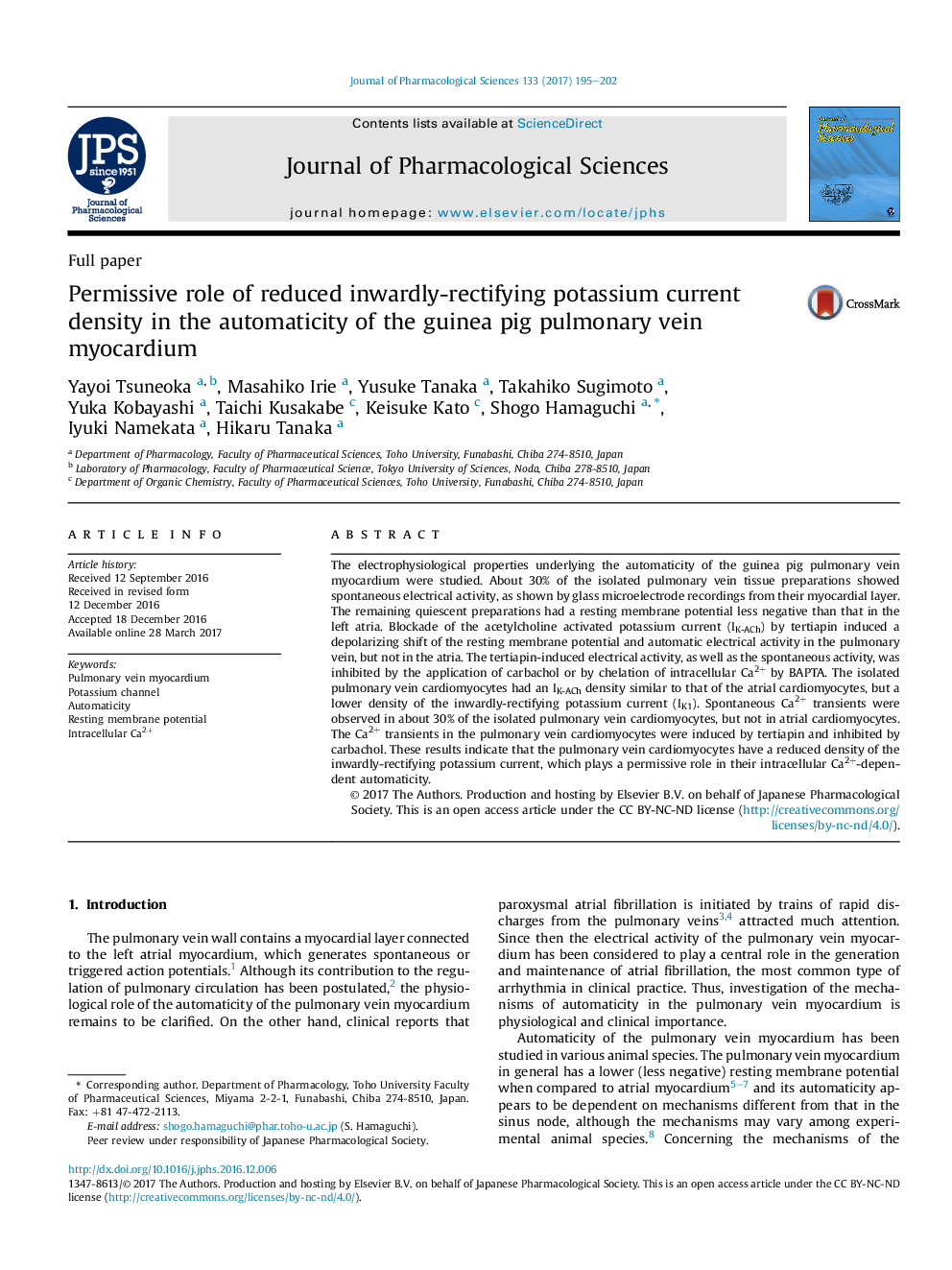| Article ID | Journal | Published Year | Pages | File Type |
|---|---|---|---|---|
| 8533219 | Journal of Pharmacological Sciences | 2017 | 8 Pages |
Abstract
The electrophysiological properties underlying the automaticity of the guinea pig pulmonary vein myocardium were studied. About 30% of the isolated pulmonary vein tissue preparations showed spontaneous electrical activity, as shown by glass microelectrode recordings from their myocardial layer. The remaining quiescent preparations had a resting membrane potential less negative than that in the left atria. Blockade of the acetylcholine activated potassium current (IK-ACh) by tertiapin induced a depolarizing shift of the resting membrane potential and automatic electrical activity in the pulmonary vein, but not in the atria. The tertiapin-induced electrical activity, as well as the spontaneous activity, was inhibited by the application of carbachol or by chelation of intracellular Ca2+ by BAPTA. The isolated pulmonary vein cardiomyocytes had an IK-ACh density similar to that of the atrial cardiomyocytes, but a lower density of the inwardly-rectifying potassium current (IK1). Spontaneous Ca2+ transients were observed in about 30% of the isolated pulmonary vein cardiomyocytes, but not in atrial cardiomyocytes. The Ca2+ transients in the pulmonary vein cardiomyocytes were induced by tertiapin and inhibited by carbachol. These results indicate that the pulmonary vein cardiomyocytes have a reduced density of the inwardly-rectifying potassium current, which plays a permissive role in their intracellular Ca2+-dependent automaticity.
Related Topics
Health Sciences
Pharmacology, Toxicology and Pharmaceutical Science
Pharmacology
Authors
Yayoi Tsuneoka, Masahiko Irie, Yusuke Tanaka, Takahiko Sugimoto, Yuka Kobayashi, Taichi Kusakabe, Keisuke Kato, Shogo Hamaguchi, Iyuki Namekata, Hikaru Tanaka,
